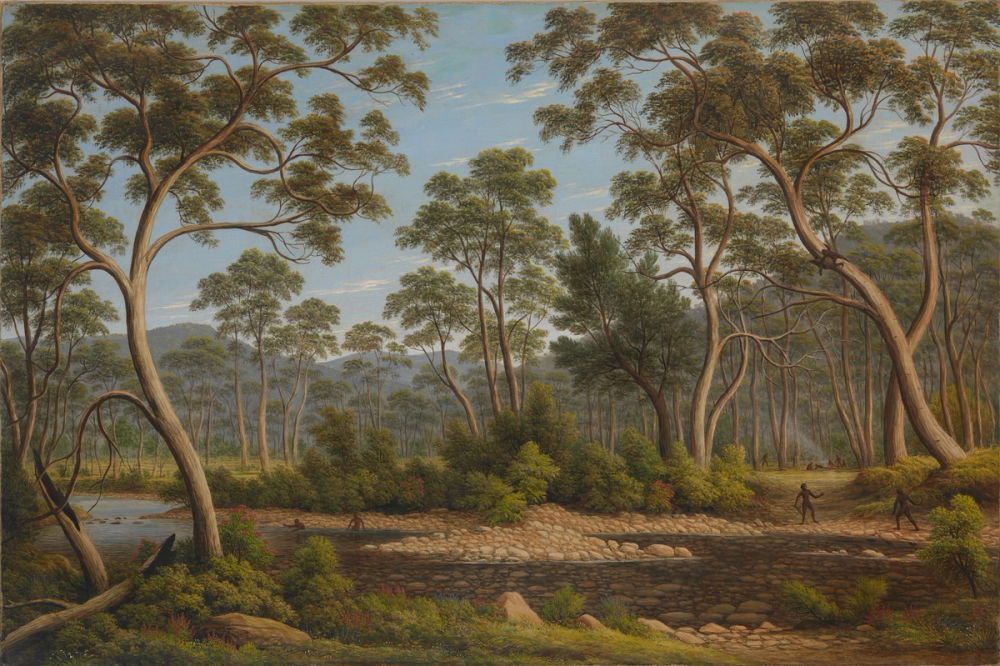
1837 - The River Nile, Van Diemen's Land, from Mr Glover's farm
John Glover
Oil on canvas
H 76.4 x W 114.6 cm
National Gallery of Victoria
libraryofnature.com
Bioregion: Tasmanian Northern Midlands (6.5% protected)3
Dry subhumid cool inland lowland plain underlain by Tertiary basalts, Jurassic dolerite, Permo-Triassic sandstones, and recent alluvium lying in the Tamar. Vegetation comprises grasslands and grassy woodlands on deep loams and alluvium and dry sclerophyll forest and woodland on, Tertiary. Grasslands and woodlands have been reduced to remnants. Land use is primarily agriculture (grazing) with some forestry. Extensively cleared for agriculture.4
John Glover5
John Glover RBA (18 February 1767 – 9 December 1849) was an English-born artist. In later life he migrated to Van Diemen’s Land and became a pastoralist during the early colonial period. He has been dubbed "the father of Australian landscape painting."
Glover decided to move to Australia, arriving in Van Diemen's Land (now Tasmania) on his 64th birthday in 1831. He brought with him a strong reputation as a landscape painter. From April 1831 until early 1832 he lived in Hobart on a property named "Stanwell Hall", which can be seen in his work Hobart Town, taken from the garden where I lived. In 1832 he acquired one of the largest grants of land in Van Diemen's Land at the time at Mills Plains, Deddington.
Glover is best known now for his paintings of the Tasmanian landscape. He gave a fresh treatment to the effects of the Australian sunlight on the native bushland by depicting it bright and clear, a definite departure from the darker "English country garden" paradigm. Note this example Patterdale Farm (circa 1840).
His treatment of the local flora was also new because it was a more accurate depiction of the Australian trees and scrubland. Glover noted the "remarkable peculiarity of the trees" in Australia and observed that "however numerous, they rarely prevent your tracing through them the whole distant country".
Artwork of species found nearby

See more »
1854 - Superb Fairywren
Elizabeth Gould

See more »
1854 - Scarlet robin
Elizabeth Gould

See more »
1854 - Superb Fairywren
Elizabeth Gould

See more »
1852 - Dusky Robin
Elizabeth Gould

See more »
1848 - Pink robin
Elizabeth Gould

See more »
1863 - Platypus
John Gould